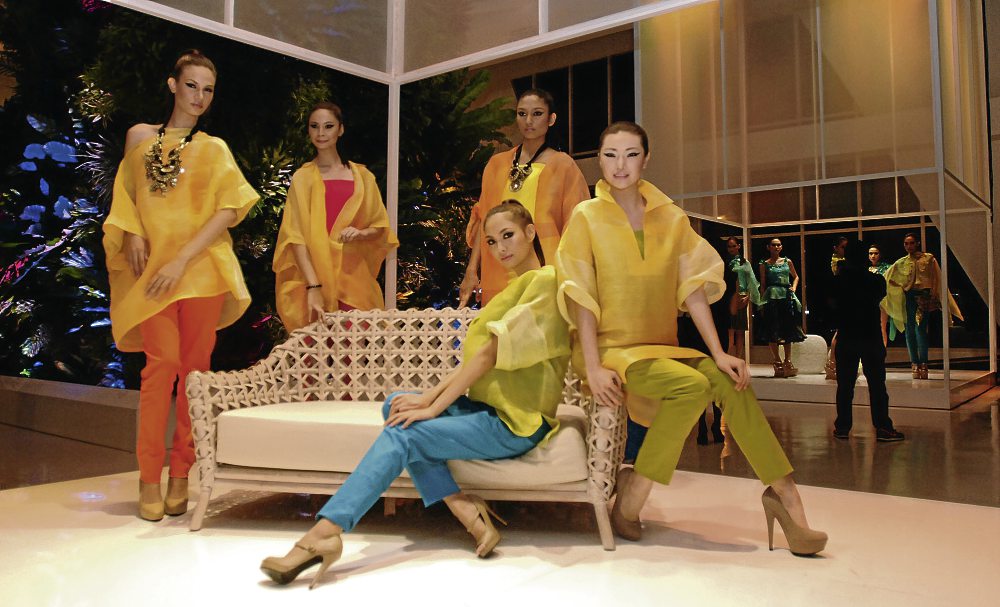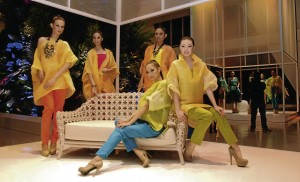
It was perhaps the first time in local fashion history that clothes and accessories were bigger than their designers. Eyeing the global market, 21 of the country’s top apparel and accessories designers joined the recent “Manila Wear” show at SMDC Grand Showroom, Pasay City.
Billed as a celebration of Philippine design and tropical lifestyle, the show was the main feature in Manila FAME’s fashion component. Each designer presented a five-piece “tropical wear” collection that combined creative uses of indigenous materials and techniques with imported fabrics and components for the high-end world market.
Apart from doing away with conventional ramp in favor of raised platforms, where models either stood or sat still, the organizers, led by New York-based designer and event curator Josie Natori, simply allowed the items instead of their designers to speak for themselves.
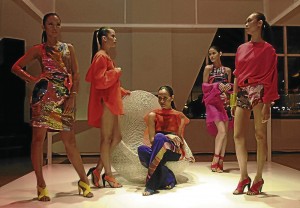
Promotional materials for guests and buyers at the entrance were flyers containing the designers’ sketches and brief info about them and their collections.
Many in the audience familiar with their work were also left guessing as to who did what, as most of the designers had to work outside their signature looks and comfort zones, incorporating local fabrics like dyed piña and abaca with more conventional ones like cotton and jersey.
Rajo Laurel even juxtaposed native fabrics fashioned into coats, wraps and tops with sequined and tailored pieces.
Embroidery and beadwork
Other designers such as Joey Samson and Randy Ortiz incorporated Philippine-style embroidery and beadwork in their collections. The show also featured the works of accessories designer Gerry Sunga and Arnel Papa, and shoe designer Maco Custodio.
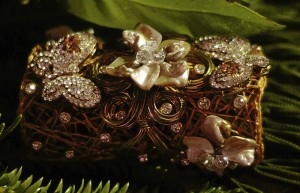
Apart from following Natori’s guidelines, Ortiz’s main considerations were pricing and producing viable pieces. He used embroidery to help the country’s artisans and to make each piece look “expensive,” he said.
None of the designers was confined to indigenous materials, silhouettes and techniques.
“The main point of this undertaking is not to do a Filipiniana collection, but to advance Pinoy fashion that would appeal to a global market,” said Ortiz.
Not a few went for looser yet contemporary silhouettes. JC Buendia, who used mostly abaca and cotton, and Dennis Lustico, also followed Natori’s color forecast by dying their fabrics in such bold shades as saffron, egg-yolk yellow, turquoise, avocado and lemon.
“I’m quite comfortable doing tailored pieces,” said Buendia. “The real challenge for me was working on new materials I’m not very familiar with.”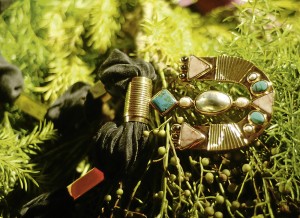
While Buendia drew inspiration from how well-heeled denizens of gated seaside communities dress, Lustico, who also did tailored and draped separates using piña, cotton and abaca, channeled luxe ’50s beach wear.
“For me, respecting material like piña without compromising the draped and twisted look, which was part of my vision, was the challenge,” said Lustico.
Samson, who did away with color, had a different set of challenges to deal with in fashioning updated versions of the barong, using various textures, materials, and treatments like embroidery, beadwork and suksuk.
“I’ve always found it difficult to work with colors,” he said. “It’s a good thing they allowed me to stick to a neutral palette.”
No fanfare
None of them seemed to mind that the show did away with the usual introduction of designers. There was also talk that the designers were first asked to do seven pieces, but Natori allegedly stepped in and brought down the number to five.
It was a fashion exhibit more than a show, as guests were encouraged to see up close the pieces on live mannequins. As each cluster of models wearing a designer’s collection exited a platform after 10 minutes or so, another group entered the scene.
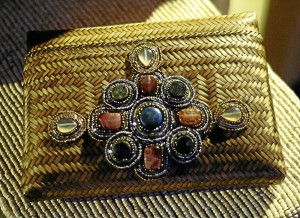 This presentation went on for almost two hours until it was time for Natori to introduce the designers.
This presentation went on for almost two hours until it was time for Natori to introduce the designers.
The other designers: Inno Sotto, Vittorio Barba, Cesar Gaupo, OJ Hofer and Jojie Lloren for apparel; and Pepito Albert, TC Alvarez-Sibal, Jun Artajo, Joel Escober, Lulu Tan-Gan, Adante Layesa, Joyce Makitalo and Patrice Ramos-Diaz for fashion accessories.
In a press conference held days before the show, Natori expressed her desire to reintroduce the Filipino fashion aesthetic first to a global market. It is hoped that the branding effort will eventually benefit not only the evening’s designers, but will also trickle down to the country’s weavers and artisans. She encouraged designers to focus on pieces that would appeal to the high-end resort market.
“I’m not saying we shouldn’t do suits,” she said. “But I believe it is in resort wear where we have the materials and design edge to be noticed globally.”

